
Use this Community of Practice presentation to assist classroom teachers in embedding career readiness skills in their classroom curriculum.
- Subject:
- Career and Technical Education
- Material Type:
- Other
- Author:
- Lynn Aprill
- Date Added:
- 12/27/2022

Use this Community of Practice presentation to assist classroom teachers in embedding career readiness skills in their classroom curriculum.

When we talk about "creating your ACP calendar," we are really talking about four things: What ACP content will be delivered to all students in each grade level 6-12 during the year? When will students work on ACP content during the year? How will we ensure that ACP content is delivered as planned? Who will be responsible for each component?Use this Community of Practice presentation to build your district's ACP calendar.

Is your district ready to create or revise your ACP program? Use this Community of Practice presentation to determine the best members of your career readiness team and to create your district ACP Action Plan.

A local school district Education for Employment program must provide students with information and opportunities that lead to:• Career awareness at the elementary levels• Career exploration at the intermediate level• Career planning and preparation at the high school grade levelsUse this Community of Practice presentation to learn how to make sure your district's ACP plan aligns with state Education for Employment legislation.

ACP doesn't happen in a vacuum, nor can it be delivered entirely by the school counselor. Use this Community of Practice presentation to learn why creating a schoolwide ACP culture is essential for student buy-in, teacher buy-in, and the ultimate success of your ACP program.
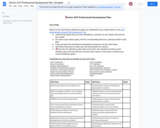
Once your district has determined their ACP/Career Readiness goals based on the ACP Implementation District Self Assessment Tool, use this template to:
-Check off the goals that your team identified as priorities for your district and rank the top 2 goals.
-For each of your district goals, find the corresponding Resource Learning Guide for that goal
-Copy and paste the professional development resources into the chart below.
-Use these resources to create your own benchmarks for success.
-Scroll to the PD calendar to plan when you’ll meet, who should be invited to each meeting, topics that you will cover and any other notes on next steps to achieve your Career Readiness goals!

Dual enrollment includes a variety of programs through which high school students are enrolled simultaneously in both high school and college to earn both high school and college credit. Such programs make college more affordable for families and introduce students to higher level coursework before they immerse themselves in college life. This slide deck provides more information on the Early College Credit Program.

Dual enrollment includes a variety of programs through which high school students are enrolled simultaneously in both high school and college to earn both high school and college credit. Such programs make college more affordable for families and introduce students to higher level coursework before they immerse themselves in college life. This slide deck explains the process for your district getting reimbursed for student ECCP course tuition, which can be submitted each year between May 30-July15.

Wisconsin's E4E legislation Act 20 requires that districts plan career awareness activities at the elementary grade levels, including developing an understanding of the following:1. Why people work.2. The kinds of conditions under which people work.3. The levels of training and education needed for work.4. Common expectations for employees in the workplace.5. How expectations at school are related to expectations in the world of work. The attached slide deck presented by Andréa Donegan, School Counseling Consultant at the WI Dept. of Public Instruction and Jenny Holle, Elementary School Counselor at the Burlington Area School District provides a wealth of linked resources to get your district started on their elementary career exploration journey.

Use this Community of Practice presentation to connect with career readiness resources your district can use with administrators and school boards.

Use this Community of Practice presentation to explore best practices in engaging with your community and higher education partners through the ACP process.

Use this Community of Practice presentation to explore resources and powerful practices to engage your students in the Career Readiness initiative and in Xello activities.

What do you think of when you hear the phrase "access and equity?" Use this Community of Practice presentation to learn more about equity and how it impacts ACP in your district.
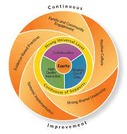
Addressing equity in the Academic and Career Planning (ACP) process goes beyond offering a
scope and sequence of ACP activities that are available to all students. It’s important that you
meet the needs of each learner. Every child will approach the ACP process differently and will
require an individualized level of support to be successful.
Therefore, it’s essential that school leaders responsible for implementing ACP explore equity
issues. The following are short activities that can help ACP or career readiness teams and leaders
encourage their own stakeholders to learn more about what equity means, how to explore who
they are, what beliefs and assumptions they hold, identify their values, and consider how all of this
can impact the learners and families they serve. The goal of each activity is to help educators learn
a little more about their students and themselves and to leave with one simple action step to
improve equity within their district.
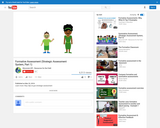
Educators use formative assessment to continually reflect and improve their skills related to these practices. The Formative Assessment video is a resource that can be used to support educators' professional development related to assessment literacy. Use the Video Supplement & Resource Guide to enhance your facilitation of this professional development opportunity.

From the website describing this resource:
With a main purpose of presenting ways that intentional review of student work can be a guide in professional development, Formative Assessment as a Compass, by Beth Rimer and Terri McAvoy, also offers ways for professional development leaders to help teachers plan lessons that fit their classrooms and students. The book starts with a definition of formative assessment and the connection between assessment and student work and goes on to offer strategies for when and how to notice what's going on with students for the purpose of moving them forward as writers.

How will the global pandemic of 2020 affect how we prepare students to become career ready by 2025? This webinar will include information on:How COVID will affect the world of workVirtual job shadows--What worked? What did we learn?What did we learn about engaging employers, students, families virtually?How can project-based learning lead to, or even become, work-based learning?New state-wide professional development and other support to help your district become future ready!
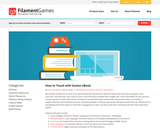
Filament Games reached out to some of their game-based learning educator allies and asked them how they use games in the classroom, and they had a lot to say! So much in fact that they’ve compiled their insights into a shiny new eBook for your perusal – introducing How to Teach with Games! The eBook is packed with expert perspectives and practical advice, all of which is supplemented by recommended resources and downloadables to help you get started with game-based learning. Whether you’re just getting started with games or have been using games for years, we think you’ll learn something new from these educators’ stories.
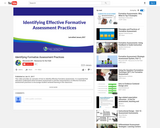
This video tutorial will help you identify effective formative practices. In order to improve student outcomes, it is essential that educators understand what the formative assessment process is and the characteristics of effective formative assessment practices.

Dual enrollment includes a variety of programs through which high school students are enrolled simultaneously in both high school and college to earn both high school and college credit. Such programs make college more affordable for families and introduce students to higher level coursework before they immerse themselves in college life. This slide deck provides information on how to make sure dual enrollment opportunities are available for all of populations of students.